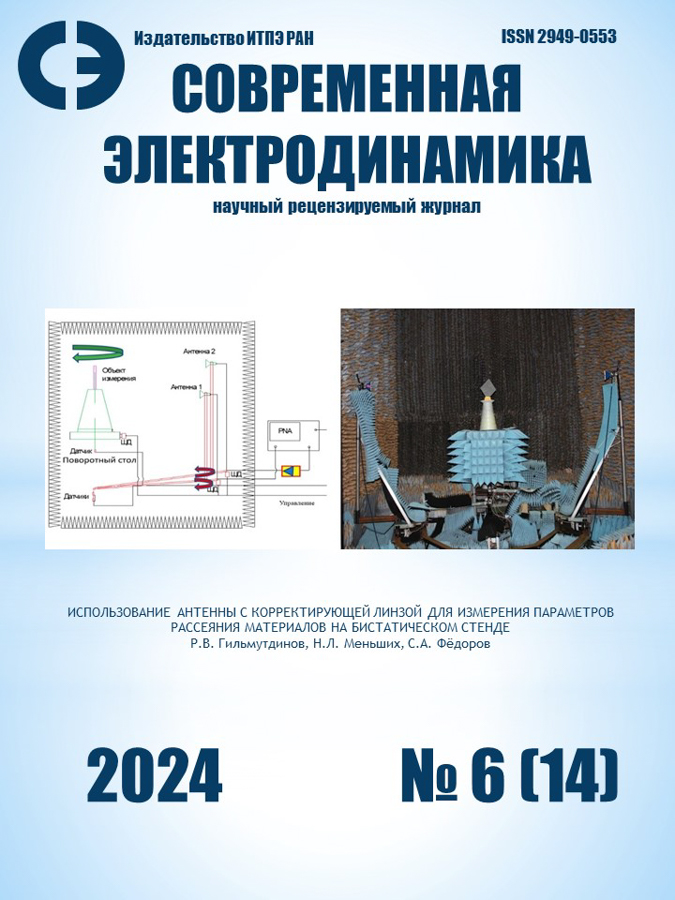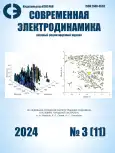No 3 (2024)
Study of radio wave propagation processes in urban conditions
Abstract
The article presents the results of modeling the propagation of radio waves in urban areas using the method of step-by-step solving a parabolic equation. A program has been developed that allows, based on data on the geometry of buildings extracted from digital maps of the area, to model a selected area of the urban environment and calculate the field distribution in it at any height above the Earth’s surface (ES) and in any sections. An area within the location of the Seligerskaya metro was chosen as an experiment. The graphs show the field radiation from an antenna located on the roof of the building with the largest number of above-ground floors, and also display the shadow area.
 4-11
4-11


Measurement of integral emission coefficients of materials heated to temperatures from 100 to 250 °C
Abstract
This paper studies the spatial distribution of the integral radiation coefficient () of materials heated to temperatures from 100 to 250 °C. The main attention is paid to the variation of this coefficient depending on the angle of incidence of radiation (). A special bench was developed for the measurements, which allows to fix with high accuracy.
Polished copper surface, ground copper surface, and black ABRO and MOTIP aerosol paints were used as the investigated materials.
The measurement results show that for the polished copper surface, the maximum values of are observed at angles of ±10°, after which the coefficient smoothly decreases to a value of 0.3 at angles of ±70°. For polished copper surface remains equal to 1 up to angles of ±40° , then decreases to 0.47 at angles ±70° . For ABRO and MOTIP aerosol paints, the distribution of is similar: at angles up to ±20° the coefficient is 1, then decreases to 0.2 (ABRO) and 0.1 (MOTIP) at angles of ±80°.
 12-24
12-24











